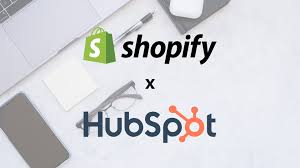As modern businesses compete to attract, convert, and retain customers in a saturated digital landscape, marketing and sales automation tools are no longer a luxury—they’re a necessity. HubSpot offers one of the most powerful solutions in the market with its Marketing Hub, empowering teams to manage campaigns, generate leads, and analyze ROI from one centralized platform. For eCommerce businesses, combining HubSpot Marketing Hub implementation with HubSpot Shopify integration creates a seamless customer journey from acquisition to post-purchase retention.
In this guide, we’ll explore how to get started with HubSpot Marketing Hub, why it’s essential for scaling your business, and how integrating it with Shopify can drive measurable growth for online stores.
What Is HubSpot Marketing Hub?
HubSpot Marketing Hub is a comprehensive inbound marketing platform designed to help businesses attract the right audience, convert visitors into leads, and nurture those leads into loyal customers. It includes tools for email marketing, landing pages, social media, SEO, paid ad tracking, lead scoring, and automation—all integrated within the HubSpot CRM.
A proper HubSpot Marketing Hub implementation ensures that your portal is not just set up but fully optimized to meet your business goals. It aligns your marketing strategy with execution, ensuring a scalable foundation for demand generation and lead management.
Key Benefits of HubSpot Marketing Hub Implementation
1. Centralized Marketing Operations
With all your marketing assets—emails, forms, ads, workflows, and reports—housed in one place, you gain control and visibility across campaigns.
2. Lead Capture & Nurturing Automation
Create personalized journeys for leads using workflows that adapt to user behavior. Automatically score leads, trigger email sequences, and route contacts to sales teams based on defined criteria.
3. Multi-Channel Campaign Management
Run and track marketing campaigns across email, social, search, and paid ads—all from one dashboard. HubSpot helps you understand what’s working and where to double down.
4. Performance Analytics & Reporting
Access real-time dashboards and custom reports that give insights into campaign performance, lead quality, and ROI.
5. Seamless CRM Integration
HubSpot Marketing Hub works directly with HubSpot CRM, enabling real-time data flow between marketing and sales—improving collaboration and customer experience.
Steps in a Successful HubSpot Marketing Hub Implementation
- Goal Definition and Stakeholder Alignment
Begin with understanding your business goals—lead generation, brand awareness, customer retention—and ensure your HubSpot setup aligns with those KPIs. - Technical Setup and Customization
Configure tracking codes, domains, permissions, and integrations. Set up custom properties, contact lifecycle stages, and segmentation lists to match your sales funnel. - Asset Migration and Template Design
Import existing email templates, forms, and landing pages into HubSpot. Ensure brand consistency and optimize for mobile responsiveness. - Automation and Workflows
Build nurturing sequences, lead scoring logic, internal notifications, and deal-stage workflows that match your buyer journey. - Analytics and Reporting
Design custom dashboards for marketing attribution, lead sources, conversion rates, and campaign ROI. - Training and Onboarding
Ensure your team knows how to use the platform efficiently. Provide documentation, recorded tutorials, or live training as needed.
A professional HubSpot Marketing Hub implementation ensures all these elements are executed flawlessly for long-term success.
The Power of HubSpot Shopify Integration
For eCommerce businesses, integrating Shopify with HubSpot opens up a new dimension of growth. The HubSpot Shopify integration allows you to sync customer, product, and order data from your online store directly into your HubSpot CRM. This creates a unified view of every customer interaction and purchase history, which is crucial for running targeted campaigns and automation.
Benefits of HubSpot Shopify Integration
1. Unified Customer View
All customer details—contact information, purchase history, and behavior—are automatically pulled from Shopify into HubSpot. This allows your marketing and sales teams to work from a single source of truth.
2. Ecommerce Segmentation and Targeting
Segment customers based on products purchased, total spend, frequency of orders, and more. Use these segments for personalized marketing that drives repeat purchases.
3. Abandoned Cart Recovery
Trigger automated email sequences to recover abandoned carts based on Shopify data synced to HubSpot.
4. Product-Specific Workflows
Build smart workflows based on product categories, tags, or SKU types. For example, upsell accessories to customers who just purchased a camera.
5. Enhanced Reporting
Track revenue attribution to marketing efforts directly in HubSpot. Understand which campaigns are generating actual sales and optimize accordingly.
6. Post-Purchase Engagement
Send post-purchase thank-you emails, request reviews, or enroll customers in loyalty programs using HubSpot workflows.
Use Case: How HubSpot Shopify Integration Boosts Sales
Example
An online cosmetics store running on Shopify integrates HubSpot. Now, whenever a customer places an order:
- Their contact is automatically created or updated in HubSpot.
- They are segmented based on product type (e.g., skincare, makeup, etc.).
- They receive a post-purchase email series recommending complementary products.
- If they abandon a cart, they get a 2-email sequence with a discount incentive.
- The marketing team tracks which ad campaigns led to the purchase directly in HubSpot.
This streamlined, automated approach results in increased AOV (Average Order Value), reduced cart abandonment, and higher repeat purchases.
Combining HubSpot Marketing Hub and HubSpot Shopify for Maximum ROI
While each tool is powerful on its own, combining a proper HubSpot Marketing Hub implementation with HubSpot Shopify integration creates a fully automated, data-driven marketing engine.
Together, they allow businesses to:
- Convert unknown visitors into known leads through gated content and lead magnets.
- Nurture those leads based on behavior and preferences.
- Trigger timely offers and communications based on Shopify purchase data.
- Optimize and personalize customer journeys from first touch to repeat sale.
Choosing the Right Partner for Implementation & Integration
While HubSpot and Shopify offer documentation and basic support, real success comes from working with a certified partner who understands both platforms deeply. An expert can customize the implementation to your business processes, build complex automation, and ensure clean, reliable data flow between systems.
Look for a partner who offers:
- Certified HubSpot onboarding and marketing implementation experience
- Shopify development and theme customization skills
- API and middleware expertise for custom integrations
- Ongoing support and strategy to scale your efforts
Final Thoughts
Investing in HubSpot Marketing Hub implementation and connecting it with HubSpot Shopify integration is one of the most powerful decisions an eCommerce or growth-focused company can make. You’ll gain the tools to drive traffic, convert leads, and deliver exceptional post-purchase experiences—all from a single, unified platform.
Whether you’re just getting started with HubSpot or ready to take your marketing automation to the next level, integrating it with Shopify ensures your store isn’t just selling—but scaling.













